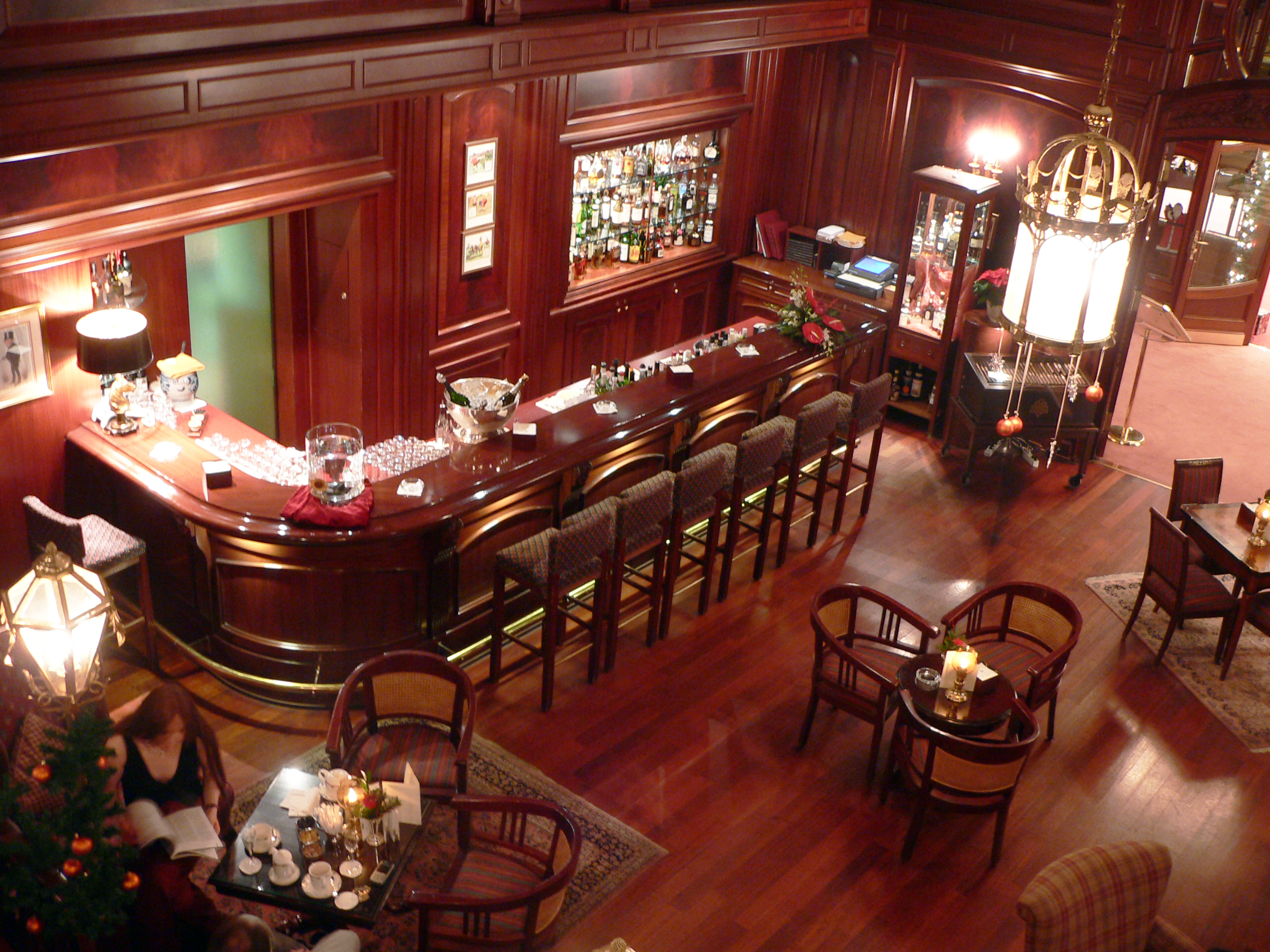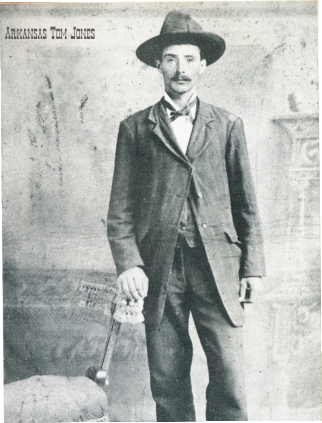|
Dalton Gang
The Dalton Gang was a group of outlaws in the American Old West during 1890–1892. It was also known as The Dalton Brothers because three of its members were brothers. The gang specialized in bank and train robberies. During an attempted double bank robbery in Coffeyville, Kansas in 1892, two of the brothers and two other gang members were killed; Emmett Dalton survived, was captured, and later pleaded guilty to second-degree murder, although he later asserted that he never fired a shot during the robbery. He was paroled after serving 14 years in prison. Brothers Bob, "Grat", and Emmett had first worked as lawmen for the federal court at Fort Smith, Arkansas and then for the Osage Nation. They started stealing horses to make more money, and then fled the area. They decided to form a gang and started robbing trains and banks. While their older brother "Bill" Dalton never joined any heists, he served as their spy and informant. Due to the sensationalism that surrounded the ... [...More Info...] [...Related Items...] OR: [Wikipedia] [Google] [Baidu] |
Bob Dalton
Robert Rennick Dalton (May 13, 1869 – October 5, 1892) was an American outlaw in the American Old West. Beginning in 1891, he led the Dalton Gang, whose varying members included three of his brothers. They were known for robbing banks, stagecoaches and trains, primarily in Kansas and Oklahoma Territory, quickly attracting pursuit by lawmen. On October 5, 1892 the gang attempted to rob two banks the same day in Coffeyville, Kansas, hoping to gain enough loot to leave the country. Attacked by civilians and law enforcement officers, Bob and Grat Dalton, Bill Power, and Richard L. "Dick" Broadwell were all killed. Younger brother Emmett Dalton was severely wounded, but survived. He was tried and convicted, and served 14 years in prison before being pardoned. Bill Dalton was not part of this heist. Early life Born in 1869 in Cass County, Missouri, Bob was one of nine sons of Lewis Dalton, from Kentucky and Jackson County, Missouri, and his wife Adeline Lee (née Younger). They ... [...More Info...] [...Related Items...] OR: [Wikipedia] [Google] [Baidu] |
Sensationalism
In journalism and mass media, sensationalism is a type of editorial tactic. Events and topics in news stories are selected and worded to excite the greatest number of readers and viewers. This style of news reporting encourages biased or emotionally loaded impressions of events rather than neutrality, and may cause a manipulation to the truth of a story. Sensationalism may rely on reports about generally insignificant matters and portray them as a major influence on society, or biased presentations of newsworthy topics, in a trivial, or tabloid manner, contrary to general assumptions of professional journalistic standards. Some tactics include being deliberately obtuse, appealing to emotions,"Sensationalism." The Free Di ... [...More Info...] [...Related Items...] OR: [Wikipedia] [Google] [Baidu] |
Frank Dalton
John Franklin Dalton (June 8, 1859 – November 27, 1887) was a Deputy US Marshal of the Old West under Judge Isaac C. Parker (the hangin' judge), for Oklahoma Territory, as well as the older brother to the members of the Dalton Gang, in addition to being the brother to William M. Dalton, once a member of the California legislature, and later an outlaw and leader of the Doolin Dalton gang alongside Bill Doolin. Frank Dalton is not to be confused with J. Frank Dalton (1848–1951), who made many claims to be famous people, including his claim of being Frank Dalton, and later Jesse James. Dalton was commissioned as a Deputy US Marshal, serving under Judge Parker, and quickly developed a reputation as being a brave lawman. Based out of Fort Smith, Arkansas, Dalton was involved in a number of shootouts and high risk arrests over a three-year period. However, on November 27, 1887, he and Deputy J. R. Cole were on the trail of outlaw Dave Smith, wanted for horse theft. As they a ... [...More Info...] [...Related Items...] OR: [Wikipedia] [Google] [Baidu] |
Jim Younger
James Hardin Younger (January 15, 1848 – October 19, 1902) was an American outlaw and member of the James–Younger Gang. He was the brother of Cole, John and Bob Younger. Life Born in Missouri on January 15, 1848. Jim Younger was the ninth of fourteen children born to Henry Washington Younger and Bersheba Leighton Fristoe. With his brother Cole, he joined the Confederate Army during the American Civil War, eventually becoming a member of Quantrill's Raiders in 1864. Jim was later captured by Union troops, in the same ambush that resulted in William Quantrill's death, and was imprisoned at Alton prison as prisoner of war until the war's end, when he was paroled. After the war Jim tried his hand at various activities, including starting a horse ranch or deputy sheriff of Dallas County, Texas between 1870 and 1871. In 1873 he joined the James–Younger Gang, which was founded by Cole, along with Frank and Jesse James. It's uncertain how much time he spent with the gang, ... [...More Info...] [...Related Items...] OR: [Wikipedia] [Google] [Baidu] |
Cole Younger
Thomas Coleman Younger (January 15, 1844 – March 21, 1916) was an American Confederate guerrilla during the American Civil War and later an outlaw leader with the James–Younger Gang. He was the elder brother of Jim, John and Bob Younger, who were also members of the gang. Early life Younger was born on January 15, 1844, on the Younger family farm in Jackson County, Missouri. He was a son of Henry Washington Younger, a prosperous farmer from Greenwood, Missouri and Bersheba Leighton Fristoe, daughter of a prominent Jackson County farmer. Cole was the seventh of fourteen children. Civil War During the American Civil War, savage guerrilla warfare wracked the state of Missouri. Younger's father was a Union supporter, but he was shot dead by a Union soldier from Kansas. After that, Cole Younger sought revenge as a pro-Confederate guerrilla or " bushwhacker" under William Clarke Quantrill. By 1862, the Confederate Army had been forced to withdraw from the state, and mos ... [...More Info...] [...Related Items...] OR: [Wikipedia] [Google] [Baidu] |
Kansas City, Missouri
Kansas City, Missouri, abbreviated KC or KCMO, is the largest city in the U.S. state of Missouri by List of cities in Missouri, population and area. The city lies within Jackson County, Missouri, Jackson, Clay County, Missouri, Clay, and Platte County, Missouri, Platte counties, with a small portion lying within Cass County, Missouri, Cass County. It is the central city of the Kansas City metropolitan area, which straddles the Missouri–Kansas state line and has a population of 2,392,035. As of the 2020 United States census, 2020 census, the city had a population of 508,090, making it the sixth-most populous city in the Midwestern United States, Midwest and List of United States cities by population, 38th-most populous city in the United States. Kansas City was founded in the 1830s as a port on the Missouri River at its confluence with the Kansas River from the west. On June 1, 1850, the town of Kansas was incorporated; shortly after came the establishment of the Kansas Terr ... [...More Info...] [...Related Items...] OR: [Wikipedia] [Google] [Baidu] |
Bar (establishment)
A bar, also known as a saloon, a tavern or tippling house, or sometimes as a pub or club, is a retail business that serves alcoholic beverages, such as beer, wine, liquor, cocktails, and other beverages such as mineral water and soft drinks. Bars often also sell snack foods, such as chip (snack), chips (crisps) or peanuts, for consumption on their premises. Some types of bars, such as pubs, may also serve food from a restaurant menu. The term "bar" refers both to the countertop where drinks are prepared and served and also metonym, by extension to the entirety of the establishment in which the bar is located. The term derives from the metal or wooden bar (barrier) that is often located along the length of the "bar". Over many years, heights of bars were lowered, and high stools added, and the brass bar remains today. History There have been many different names for public drinking spaces throughout history. In the Thirteen Colonies, a Taverns in North America, tavern was a Me ... [...More Info...] [...Related Items...] OR: [Wikipedia] [Google] [Baidu] |
Jackson County, Missouri
Jackson County is located in the western portion of the U.S. state of Missouri, on the border with Kansas. As of the 2020 United States census, 2020 census, the population was 717,204. making it the second-most populous county in the state (after St. Louis County, Missouri, St. Louis County in the east). The county seats are Independence, Missouri, Independence and Kansas City, Missouri, Kansas City, making Jackson County one of 33 County seat#U.S. counties with more than one county seat, U.S. counties with more than one county seat. The county was organized December 15, 1826, and named for former Tennessee senator Andrew Jackson, who would become President of the United States three years later in 1829. History Early years Jackson County was long home to members of the indigenous Osage Indians, Osage tribe, who occupied this territory at the time of European encounter. The first known European explorers were France, French Animal trapping, trappers who used the Missouri River ... [...More Info...] [...Related Items...] OR: [Wikipedia] [Google] [Baidu] |
Wild Bunch
The Wild Bunch, also known as the Doolin–Dalton Gang, or the Oklahombres, were a gang of American outlaws based in the Indian Territory in the late 19th and early 20th centuries. They were active in Kansas, Missouri, Arkansas, and Oklahoma Territory during the 1890s—robbing banks and stores, holding up trains, and killing lawmen. They were also known as The Oklahoma Long Riders because of the long dusters that they wore. The gang formed in the last decade of the 19th century, and most of its members were killed before 1900. Only two of its eleven members survived into the 20th century, and all eleven met violent deaths in gun battles with lawmen. Members The gang was led by Bill Doolin and William Marion "Bill" Dalton; it included the following men at various times: William "Tulsa Jack" Blake, Dan "Dynamite Dick" Clifton, Roy Daugherty (a.k.a. "Arkansas Tom Jones"), George "Bitter Creek" Newcomb (a.k.a. "Slaughter Kid"), Charley Pierce, William F. "Little Bill" Raidle ... [...More Info...] [...Related Items...] OR: [Wikipedia] [Google] [Baidu] |
Bill Doolin
William Doolin (1858–August 24, 1896) was an American bandit outlaw and founder of the Wild Bunch, sometimes known as the Doolin-Dalton Gang. Like the earlier Dalton Gang alone, it specialized in robbing banks, trains, and stagecoaches in Arkansas, Kansas, Indiana, and Oklahoma during the 1890s. Early life Doolin was born in 1858 in Johnson County, Arkansas, to Michael Doolin and the former Artemina Beller. Doolin left home in 1881 to become a cowboy in Indian Territory, where he worked for cattleman Oscar Halsell, a Texas native. During this time, Doolin worked with other cowboy and outlaw names of the day, including George Newcomb (known as "Bitter Creek"), Charley Pierce, Bill Power, Dick Broadwell, Bill "Tulsa Jack" Blake, Dan "Dynamite Dick" Clifton, Billie "Little Bill" Raidler and the better-known Emmett Dalton. Doolin's first encounter with the law came on July 4, 1891, in Coffeyville in southeastern Kansas. Doolin and some friends were drunk in public, and la ... [...More Info...] [...Related Items...] OR: [Wikipedia] [Google] [Baidu] |








